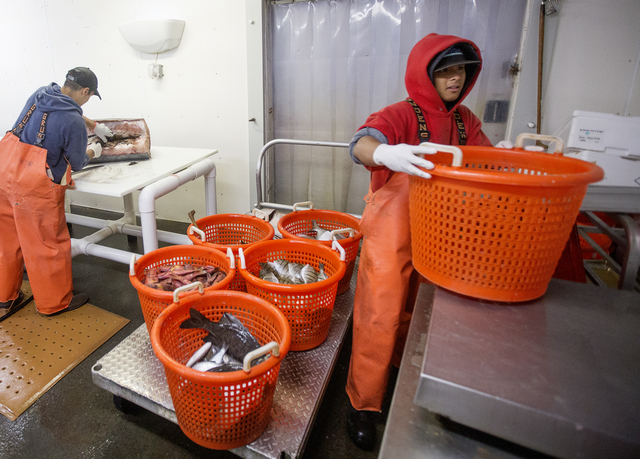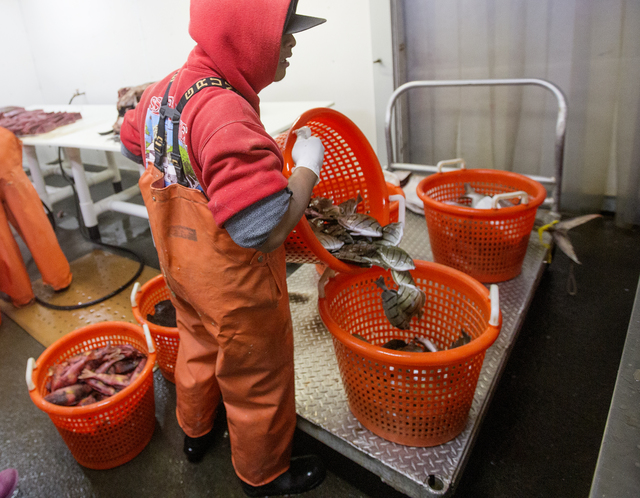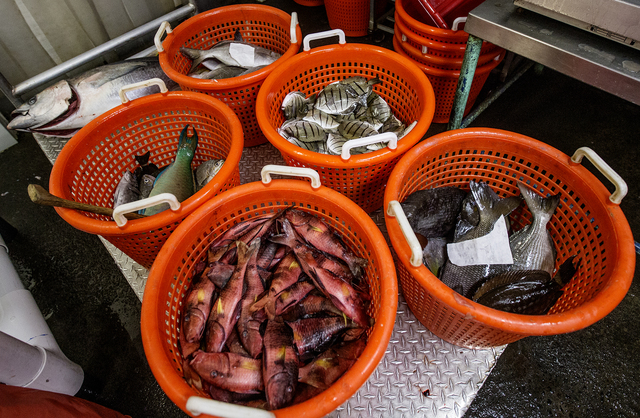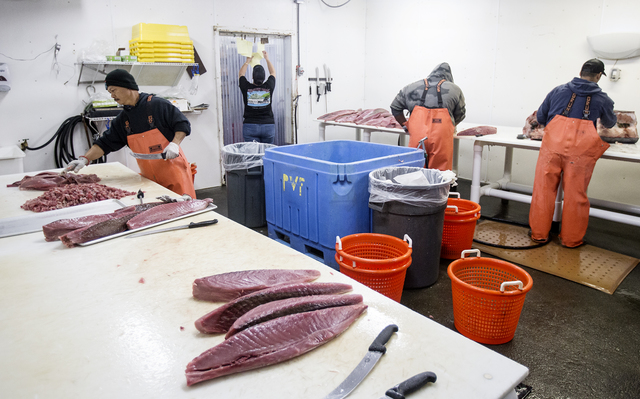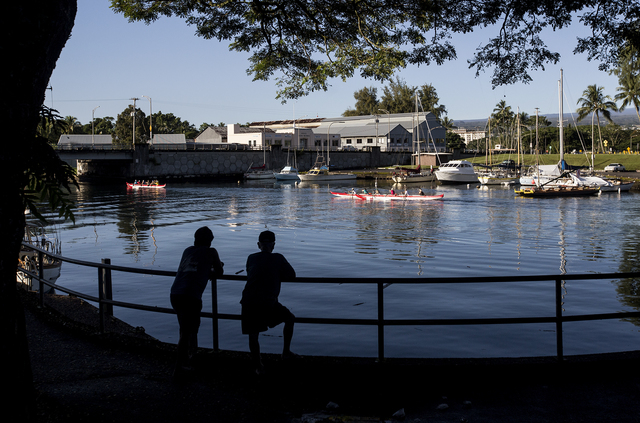A September Associated Press report regarding labor conditions of foreign workers on Honolulu fishing boats has prompted many in the industry to review or reasses their own sourcing practices.
On the Big Island, Suisan undertook an evaluation of its policies.
The retailer purchases all of its seafood from local fishermen and does not buy from longline boats, but wanted to “reassure the public that these are our fishermen here, and you don’t have to worry about that issue,” said vice president and general manager Kyle Kawano.
The Associated Press report last month found abuses of basic labor practices by some longline boats in Hawaii’s commercial fishing fleet. A federal loophole allows foreign crews to work on the vessels but they are not legally allowed to enter the country and cannot leave the boats.
Since then a new crew contract was developed by the Hawaii Longline Association that will be required of all boats who want to sell at the Honolulu fish auction. That contract is not federally enforceable by U.S. Customs and Border Protection, however, the industry will still be self-regulating.
Suisan president Glenn Hashimoto said that one of the boats Suisan works with employs two foreign workers who are relatives of the captain’s wife. He said they each have contracts like their American counterparts.
“They’ve been verified,” Kawano said.
According to the National Oceanic and Atmospheric Administration, more than 80 percent of Hawaii’s commercial fish landings are from longline boats. Troll fishing comprises just over 10 percent.
Handline and seamount boat fishing account for 3.9 percent and 2.9 percent, respectively.
An undated fisheries overview by the Western Pacific Regional Fishery Management Council, which manages fish stocks, notes that handline-caught tuna plays a “significant role in the local tuna supply, particularly on the Big Island.”
Suisan sources 72 percent of its fish from day boats, which typically spend one to two days at sea, while 28 percent comes from seamount boats, which spend about a week at sea.
Longline boats in the Honolulu fleet travel farther while fishing, so trips last about 21 days.
There is little information available regarding how fish retailers similar in size to Suisan have addressed sourcing.
A spokesperson for the Hawaii Seafood Council in Honolulu, a nonprofit organization dedicated to supporting sustainable and local fisheries, said in an email that the council did not have information regarding how seafood markets on Neighbor Islands were sourcing fish and that he could not recall reading any studies focused on the question.
Hilo Fish Company, which is based in Hilo but has outlets statewide as well as on the mainland and East Asia, did not respond to emailed interview questions.
However, other large Hawaii retailers have taken steps in light of the AP reports.
In September, KHON reported that Whole Foods had stopped purchasing from longline boats at the Hawaii fish auction in Honolulu.
“We are committed to the communities we serve in Hawaii and will continue to source from local, day-boat fishermen with proven fair labor practices,” Whole Foods spokeswoman Janette Rizk said in an email to the Tribune-Herald.
The Associated Press contributed to this report.






